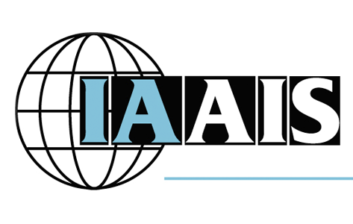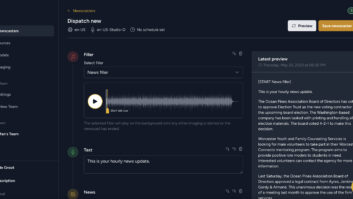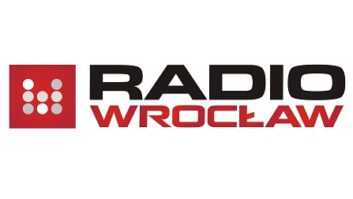 Many broadcasters are aware of the excellent work done in their cities by members of IAAIS, the International Association of Audio Information Services. IAAIS member stations are information access services using FM analog subcarrier transmissions to deliver daily readings of local newspapers, grocery and other shopping news, books, magazines and civic notices.
Many broadcasters are aware of the excellent work done in their cities by members of IAAIS, the International Association of Audio Information Services. IAAIS member stations are information access services using FM analog subcarrier transmissions to deliver daily readings of local newspapers, grocery and other shopping news, books, magazines and civic notices.
Highly dependent on volunteers, this non-profit industry has a 30-year history of service to people who live with vision-impairments, are blind, or who can not hold a book or turn pages.
IAAIS and its HD Radio Taskforce have issued the IAAIS Standards for Accessible HD Radios. I have been asked to offer an introduction to those standards and the StAR Project, which stands for Standards for Accessible Radios. A short history is therefore in order.
A basic tenet of the IAAIS stance on the nation’s radio conversion to digital is that IAAIS gets out of the special receiver business. For all of its history, the system of reading aloud over FM analog subcarrier required the use of expensive, pre-tuned SCA receivers.
Many of these SCA tuners are lost in nursing homes, thrown away by relatives when clearing the estate of a recently deceased listener to the reading service, or given to local thrift shops with the other household electronics. The inventory loss is staggering.
The IAAIS wants HD Radios available to the public to also have the ability to receive radio reading services; however that goal has a wrinkle.
Point-to-point
Reading services on SCA are considered a point-to-point transmission under commission rules. This enables the analog SCA reading service to read aloud from books and magazines that contain words unutterable on open channel.
This is important, in that the listener has no other access to the material, and has the same right as his or her peers to read a bestseller or magazine without a censor. To avoid complications, reading services needed to be kept “private” on the HD Radio receiver. Thanks to the diligent work of NDS, iBiquity Digital and IAAIS, this was accomplished with the inclusion of a conditional access system in the HD Radio circuitry.
This means that the consumer of the future will be purchasing an HD Radio that will be capable of tuning in the local reading service, and no additional equipment would be required. It also means that the radio must be operable by people who cannot see the LCD or other displayed information. The radio has to be accessible.
The majority of the StAR project team were blind consumers who are professionals in the radio reading industry and experts at figuring out consumer electronic and broadcast electronic devices by experimentation, trial and error and sometimes luck.
The goal of the team was to make all HD Radios easy to sell to people living with vision loss. As a pleasant byproduct, the units that meet the standards will also appeal to the general public and the standards can be applied to other consumer electronic devices.
The team worked through many permutations of the standards and developed a non-technical, easy-to-read document that discusses the controls, features, documentation and displays on an HD Radio that will make it possible for IAAIS to recommend that unit to members for purchase by the stations and consumers. A copy of the standards is at the IAAIS Web site, www.iaais.org.
The key to the unit’s accessibility is that it must speak. When the unit is powered on, it must recite what is on the display as well as which functions it is performing. The buttons, knobs and other controls must be tactile — discernible by touch. The documentation must be accessible as well.
Promising prototype
Costs to create such a unit are not high; in fact, as the HD Radio Taskforce finalized its work, members reviewed a promising prototype that spoke when powered up and had nearly all of the required characteristics. The manufacturer projects that it expects to be able to offer the unit for under $100, where it is currently priced. This bodes well for sales to both disabled and able consumers.
The standards do not stop with the minimum requirements. We codified additional, preferred characteristics that would add value to a unit, such as improved speech controls that enable users to change the speed of the synthetic speech.
Another preferred characteristic is an onboard “tutor” button that changes the controls from an operating mode to an explanatory mode. Imagine the radio saying “seek up” or “seek down” when the button is pressed and you’ve got the idea of tutorial mode.
We also took time to stipulate clearly the characteristics of a radio that would make the unit ineligible for acceptance by IAAIS. Touch screens are at the top of that list because they are not static. You can make a change and not see the change.
Manufacturers who digest the document and apply these universal design principals will open up a huge market for these units; a market that is disinterested in currently available off-the-shelf devices. According to the U.S. Census Bureau, there are more than 195 million Americans between age 16 and 64 who have some type of disability.
The American Foundation for the Blind estimates a national population of 21.2 million Americans is living with vision loss. That figure represents a lot of additional HD Radio sales.
By adopting the principles of universal design, HD Radios can be sold to an eager audience of men and women who have a high degree of motivation to adopt the new technology. In our research and review of existing units, both accessible and not, we learned that a single note on an e-mail group of blind consumers about our prototype returned excited inquiries on where to buy one and how soon would the units be available.
In short, it isn’t only the right thing to do, it’s smart business both to create the HD Radio system to include blind and vision-impaired listeners and to build a better radio. IAAIS hopes that many manufacturers come to the Web site and download the StAR Project report. And, by the way, the StAR Project Report is in large print.
Noble is chair of the HD Radio Taskforce for the International Association of Audio Information Services.
Radio World welcomes other points of view to [email protected].












